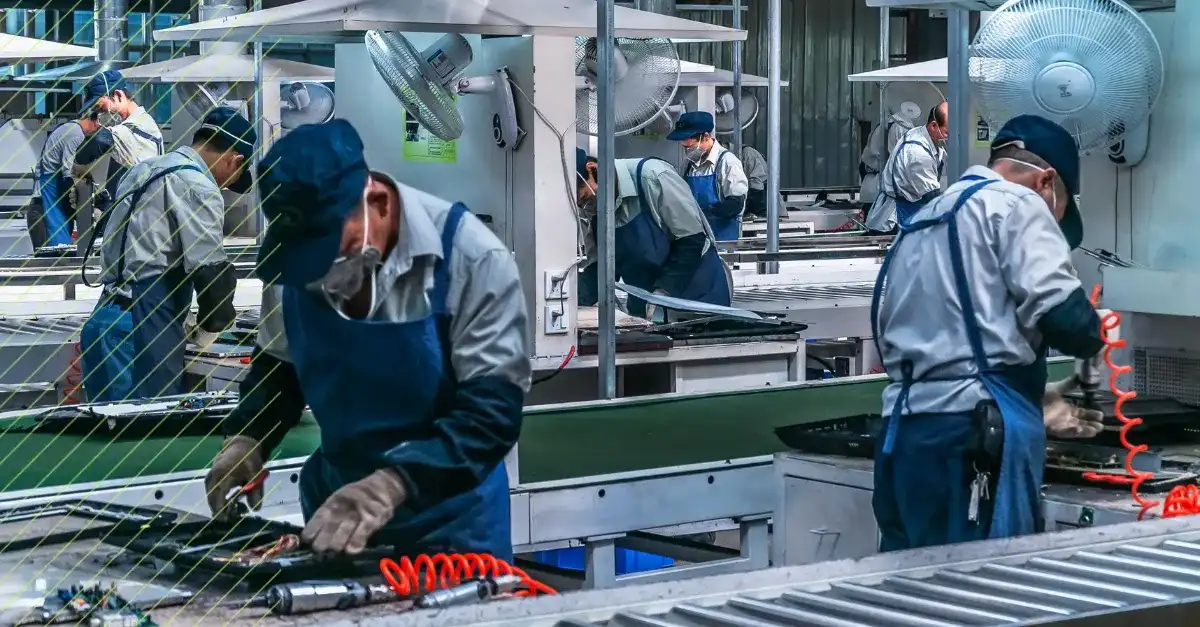What is Takt Time in Manufacturing?
Takt time is a metric commonly used in lean manufacturing to measure the pace at which you should produce your product to meet customer demand. The term takt comes from the German word “taktzeit,” which means “cycle time,” but it’s not exactly the same. Unlike cycle time, which measures how long it takes to convert raw materials into a finished product, takt time helps you measure the production time between units, divided by customer demand.
In this blog post, we will delve into the importance of takt time, how you can measure it and how to leverage the calculation to improve your standard operating procedures.
%20(1000%20%C3%97%20200%20px).png?width=1000&height=200&name=Copy%20of%20FTR%202%20(1000%20%C3%97%20400%20px)%20(1000%20%C3%97%20200%20px).png)
Takt time: the heartbeat of your manufacturing processes.
A typical day shift is composed of roughly 420 minutes. That is, 8 hours minus 1 hour for lunch and small breaks. In manufacturing, each of these minutes counts. Even small delays in a process can derail operations and ultimately affect customer orders. For instance, if you fulfill customer orders daily, you have to ensure that your process runs in a consistent beat to deliver on your daily commitments.
Let’s take an example:
Calculating takt time.
- Suppose you need to produce 100 units of product per day in order to fulfill customer orders.
- If we assume your employees work 420 minutes per day (a standard day shift), your takt time would be 4.2 minutes.
- That means that you need to be producing a product every 4.2 minutes to make sure you meet demand.
This is a simple example. Your takt time may be influenced by factors like labor regulations and safety measures.
In any case, when you use takt time as a metric, you need to consider that a takt time that is too short might increase the likelihood of injury. Sharp increases in demand also mean you need to revisit your takt time or potentially restructure your processes.
Speaking of processes, takt time can also be an important metric to assess the effectiveness of your standard operating procedures and work instructions.

Takt time and standard operating procedures (SOPs).
If you notice that your takt time is too slow to meet demand, it might be time to revisit your SOPs or communicate work instructions in a better way. Effective SOPs should help your team work as efficiently as possible. But how do you measure their effectiveness?
Measure time spent per task.
A platform for standardizing work and creating digital work instructions can help manufacturers measure the time spent on each step of their processes and monitor completion rates. These tools offer powerful data analytics and integrate with 3rd party systems to optimize data visualization.
Assessing how long each task takes to complete not only increases your overall efficiency, but it can help you improve your takt time.
Identify bottlenecks, crowdsource best practices and optimize.
If you identify bottlenecks, you can use a digital work instruction platform to crowdsource and standardize best practices from the frontline.
- You can measure if some sites are more effective than others at meeting your takt time and implement improvements based on these learnings.
- Alternatively, you can localize takt time and optimize where you produce your goods, based on specific constraints.
The best work instruction platforms will allow you to share optimized standards across sites throughout your value chain so that improvements made to metrics like takt time can be reproduced where they’re needed most.
Discover quality craftsmanship in furniture manufacturing. From timeless classics to modern innovations, explore a diverse range of designs crafted with precision and attention to detail.
Start improving your takt time today.
SwipeGuide customers are able to complete tasks in 20% less time. Learn more about SwipeGuide’s features and contact us to get a demo.


